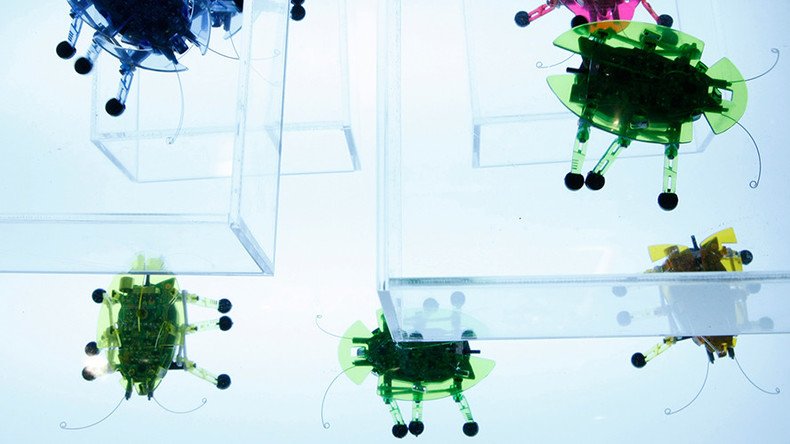Robo-geddon? 6 microrobots move a car 18,000 times their weight (VIDEO)

We don’t want to alarm you, but researchers appear to have come a step closer to helping robots one day take over the world.
Inspired by insects and lizards, researchers at Stanford University, California have designed a tiny robot capable of shifting weights many times its size, either working solo in in groups.
The “microTug” robots use a special adhesive inspired by gecko toes to move objects over 2,000 times their weight. If this level of power was ever used against mankind, we might be in deep trouble.
When the robots team up, their strength is significantly multiplied. Despite six robots weighing 3.5 ounces (100g) in total, linked together they can pull a car weighing 3,900lb (1,800kg).
For perspective, that’s the equivalent of six humans managing to move the Eiffel Tower and three Statues of Liberty, Stanford University graduate researcher David Christensen told the New York Times.
READ MORE: Scrap metal madness: Plumber creates DIY ‘firework rocket launcher’ to blow his socks off (VIDEO)
In a Stanford newsletter piece outlining the project, Christensen explained that ground reaction forces are key in the experiment, and noted that the team hopes their work can be applied to emergency rescue operations.
“We want to build microrobots that can not only explore a disaster site in a search and rescue mission, but pull the survivors to safety when they are found,” he wrote.












